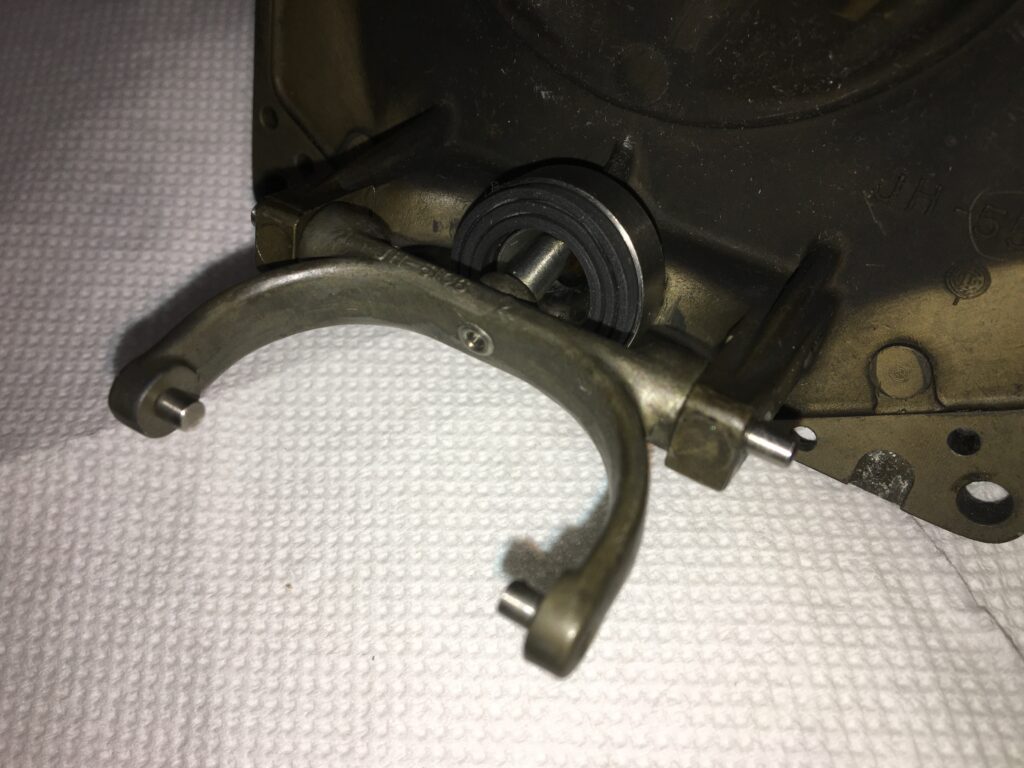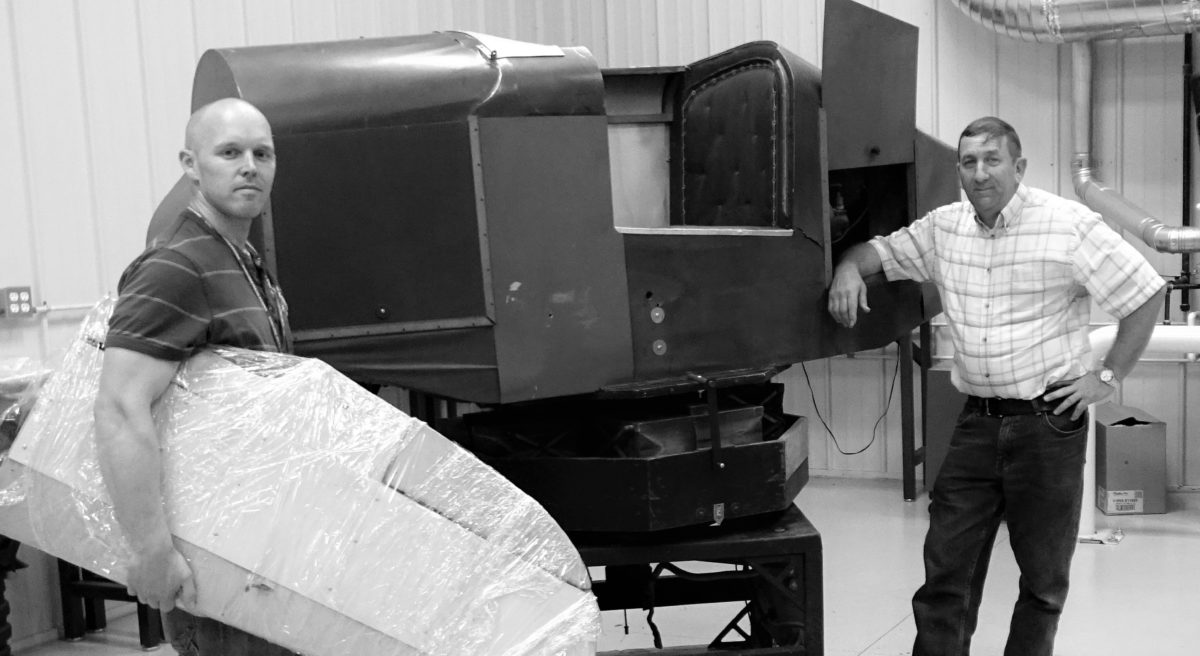The directional gyro in our C-3 is an AN-5735-1. It consists of a spinning inertial mass suspended in a 2 degree of freedom gimbal. It is connected to the vacuum manifold via copper tubes and hoses. Vacuum exhausts the sealed instrument’s cavity causing external ambient air to be directed via a small nozzle to fins on the gyro. The passing air causes the gyro to spin at 8,000 to 10,000 rpm. Once the gyro builds up inertia, it causes the compass ring to respond to fuselage yaw motion.

The front knob on the directional gyro can be pushed in to cage the instrument. This resets the gyro to spin horizontally. The knob can also be rotated while pressed in to adjust the compass ring to the proper heading.

Our directional gyro was not operating. We disassembled the unit and found a buildup of grime on the intake air filter. We cleaned the metal filter screens with alcohol and replaced the cloth screen with gauze. Although this improved the airflow through the instrument, the gyro still did not spin up.
We cleaned the compass heading bearings and lubricated them with clock oil.
After further investigation we concluded that although the gyro was easily spun by a light finger flick, it did not move freely enough to allow the air to start the motion. We started to remove the gyro’s bearings and discovered that they were shimmed out with thin metal foil. An additional 0.001” or so spacing was all that was required to free up the gyro. It now spins and the directional gyro works properly.

We broke our lubber line during disassembly. Very depressing. The original lubber line consists of a glass capillary tube filled with phosphor. We replaced ours with a 0.025” diameter drill which we painted white.

The instrument’s glass window consists of two thin pieces of glass separated by a resistive film. The purpose of the multilayer window was to minimize fogging. You can see fungus which has grown between the two glass layers over the years.
